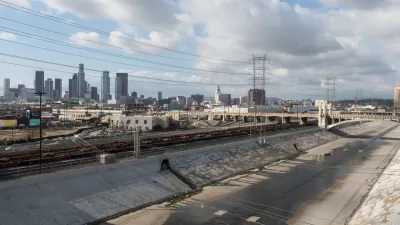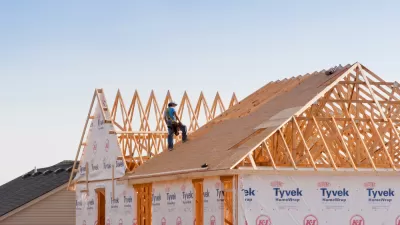A Los Angeles City Councilmember discusses his instructive quest to cobble together funding for the revitalization of his district after the termination of community redevelopment agencies.
[Updated 1/4/2016. This post was updated with a corrected link.] The "financially depressed" San Fernando Valley community of Reseda stood to receive $60-70 million worth of potential projects before the California Redevelopment Agency was dissolved in 2011.
"I didn’t want us to completely lose all that," says L.A. City Councilmember Bob Blumenfield, who represents Reseda.
Going ahead with revitalization plans would mean finding new sources of funding, and moving quickly to capture remaining funds and opportunities left behind by the CRA.
"Council offices, even in the pre-CRA world, were and continue to be very influential in the planning processes in their district," he says. But post-CRAs, they may be required, in some cases, to identify unlikely sources of funding.
First, he set about gaining city control over CRA properties so that they could continue to be developed. That involved some wrangling with the governor, who finally settled on a process that requires approval from multiple oversight boards.
There's also the question of nearly $90 million in bonds issued, but not spent, before the CRA was disbanded. Those monies are effectively suspended, unattached to a spending authority.
"Those bonds were let prior to the day that the bill cut off the CRAs," Blumenfield explains. “They were in the pipeline, so what happens to that money?”
That question is still not fully resolved. In the meantime, cities are becoming more creative in their searches for funding and partners.
In some cases, officials can identify funding, then use those opportunities as inspiration when identifying projects. Looking to Prop K, Blumenfield’s team found that money had been earmarked for a skating rink that was never completed. Now, he’s incorporated a “world-class facility” into his plans to bring growth to the area.
In the post-CRA era, Blumenfield explains, cities have to be resourceful:
"There’s overall financing like EIFDs; there’s project-specific financing that you just have to be opportunistic about; and there’s park financing, which you have to take advantage of and cobble things together."
This is Part II of a two-part interview with Councilmember Blumenfield in The Planning Report.
FULL STORY: Metro’s Joint Development Goal: Transit Oriented Communities

Maui's Vacation Rental Debate Turns Ugly
Verbal attacks, misinformation campaigns and fistfights plague a high-stakes debate to convert thousands of vacation rentals into long-term housing.

Planetizen Federal Action Tracker
A weekly monitor of how Trump’s orders and actions are impacting planners and planning in America.

In Urban Planning, AI Prompting Could be the New Design Thinking
Creativity has long been key to great urban design. What if we see AI as our new creative partner?

King County Supportive Housing Program Offers Hope for Unhoused Residents
The county is taking a ‘Housing First’ approach that prioritizes getting people into housing, then offering wraparound supportive services.

Researchers Use AI to Get Clearer Picture of US Housing
Analysts are using artificial intelligence to supercharge their research by allowing them to comb through data faster. Though these AI tools can be error prone, they save time and housing researchers are optimistic about the future.

Making Shared Micromobility More Inclusive
Cities and shared mobility system operators can do more to include people with disabilities in planning and operations, per a new report.
Urban Design for Planners 1: Software Tools
This six-course series explores essential urban design concepts using open source software and equips planners with the tools they need to participate fully in the urban design process.
Planning for Universal Design
Learn the tools for implementing Universal Design in planning regulations.
planning NEXT
Appalachian Highlands Housing Partners
Mpact (founded as Rail~Volution)
City of Camden Redevelopment Agency
City of Astoria
City of Portland
City of Laramie




























